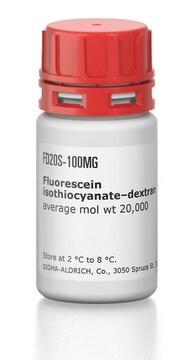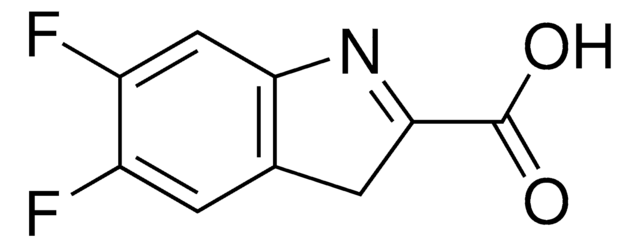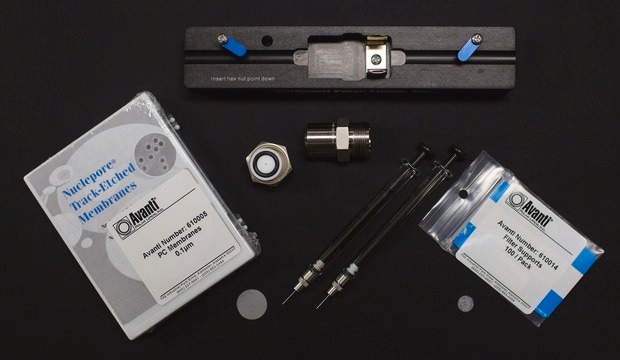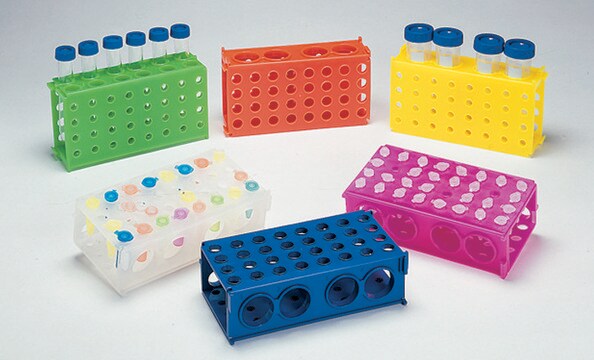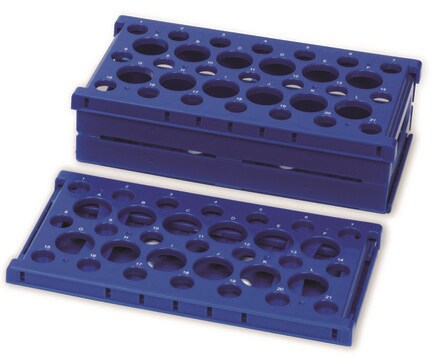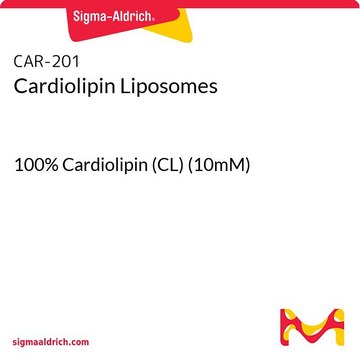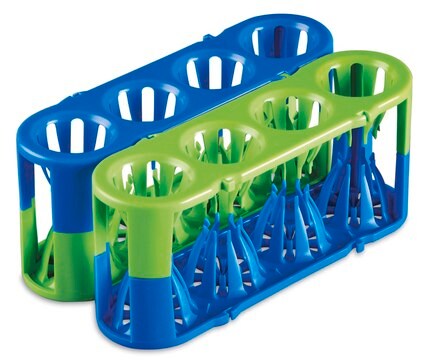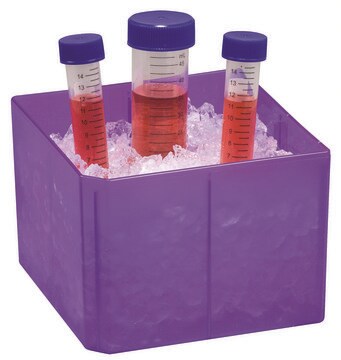Recommended Products
Quality Level
composition
Phosphate buffered saline
concentration
1 mM
impurities
100 mol % 16:0 Diether PC
particle size
100 nm
pH
7.4
Looking for similar products? Visit Product Comparison Guide
General description
Liposomes are extensively used to study the interaction of proteins, peptides and other molecules with the surface of a lipid membrane. Ether lipids are a unique class of glycerophospholipids that have an alkyl chain attached to the sn-1 position by an ether bond.
Due to distinctive properties of ether lipids, liposomes made from ether lipids exhibit very unique characters and performance:
*ether bonds are more stable than ester linkages over a wide range of acidic or alkaline pH
*stability properties of the liposomes are enhanced by biopolar lipids and the saturated alkyl chains gives stability towards degradation in oxidative conditions
*the unusual stereochemistry of the glycerol backbone enhances the resistance against phopholipases
Due to their increased stability properties, ether liposomes are suitable candates for experiments that require an extended period of time as they can neither be hydrolyzed, oxidized, and can withstand higher temperatures.
Due to distinctive properties of ether lipids, liposomes made from ether lipids exhibit very unique characters and performance:
*ether bonds are more stable than ester linkages over a wide range of acidic or alkaline pH
*stability properties of the liposomes are enhanced by biopolar lipids and the saturated alkyl chains gives stability towards degradation in oxidative conditions
*the unusual stereochemistry of the glycerol backbone enhances the resistance against phopholipases
Due to their increased stability properties, ether liposomes are suitable candates for experiments that require an extended period of time as they can neither be hydrolyzed, oxidized, and can withstand higher temperatures.
Application
Drug delivery
Lipid-protein interactions
Lipid-protein interactions
Storage and Stability
Liposomes should never be frozen. Liposomes should be stored in the dark at 4°C, except when brought to room temperature for brief periods prior to use.
Liposomes are made under sterile conditions. If you need to take multiple aliquots out of the vial, it is advised to take extreme care in not contaminating the vial. It is recommended to handle the vial under a sterile hood to maintain the sterility of the product. Liposomes should never be frozen. Ice crystals that form during freezing will rupture the lipid membrane of the liposomes and change the size of liposomes particles.
Liposomes are made under sterile conditions. If you need to take multiple aliquots out of the vial, it is advised to take extreme care in not contaminating the vial. It is recommended to handle the vial under a sterile hood to maintain the sterility of the product. Liposomes should never be frozen. Ice crystals that form during freezing will rupture the lipid membrane of the liposomes and change the size of liposomes particles.
Legal Information
Cellsome is a trademark of Encapsula NanoSciences
Product of Encapsula Nanosciences
Disclaimer
For research use only
Storage Class Code
12 - Non Combustible Liquids
WGK
WGK 1
Flash Point(F)
Not applicable
Flash Point(C)
Not applicable
Choose from one of the most recent versions:
Certificates of Analysis (COA)
Lot/Batch Number
Sorry, we don't have COAs for this product available online at this time.
If you need assistance, please contact Customer Support.
Already Own This Product?
Find documentation for the products that you have recently purchased in the Document Library.
Our team of scientists has experience in all areas of research including Life Science, Material Science, Chemical Synthesis, Chromatography, Analytical and many others.
Contact Technical Service